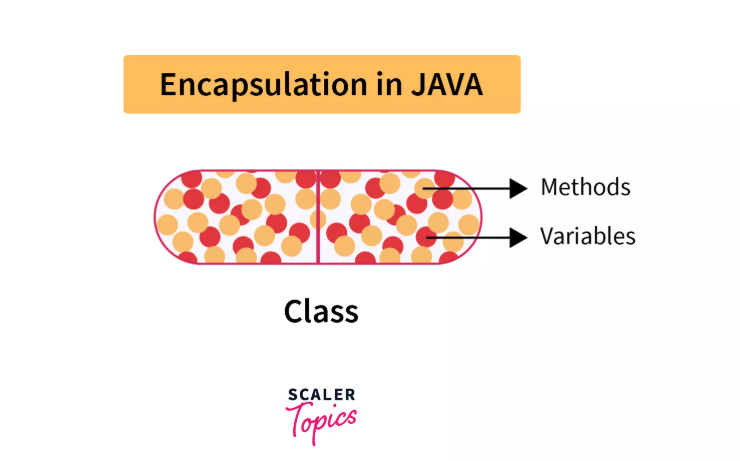
Java encapsulation is a basic OOP (Object-Oriented Programming) idea. Usually in a class, it pays on wrapping data and the techniques that operate on that data into one unit. It limits direct access to particular components, thereby, encouraging data hiding and improving security. Encapsulation guarantees that objects preserve control over their internal state by means of access modifiers and getter/setter techniques. Encapsulation is therefore a must in Java development as it produces cleaner, more maintainable, and error-resistant code. Aspiring Java developers can check the Java Full Stack Course Online for more information on Encapsulation.
All About Encapsulation In Java
Java encapsulation is one of the four fundamental Object-Oriented Programming (OOP) concepts besides inheritance, polymorphism, and abstraction. It is the way to combine the methods (functions) acting on the data (variables) and the data (variables) itself into one package. It also involves limiting direct access to certain parts of the object, thereby, avoiding unintentional data alteration. Java access modifiers and getter/setter methods help achieve encapsulation.
Why Is Encapsulation Important?
- Data Protection: Encapsulation guarantees the outside view of an object lacks access to its internal representation. Only means inside the class can touch or change the data. Hence, the object is protected from being in an invalid state.
- Control Over Data: It lets one manage the values sent to fields. To avoid invalid inputs, programmers can include validation logic within the setter methods.
- Improved Maintainability: The encapsulated code is changed with a reduced probability of impacting other components of the application. This simplifies application maintenance and management.
- Code Flexibility and Reusability: Encapsulated classes can be repurposed in several applications without exposing their design specifics.
How To Achieve Encapsulation In Java
Encapsulation in Java is accomplished through the following method. Refer to the Java Full Stack Developer Course in Noida for complete guidance.
- Mention the variables of a class as “private”.
- Give public “getter” and “setter” methods to update the private variables’ values.
Syntax Example:
// Step 1: Create a class with private variables
public class Employee {
private String name;
private int age;
// Step 2: Public getter for name
public String getName() {
return name;
}
// Step 3: Public setter for name
public void setName(String name) {
this.name = name;
}
// Getter for age
public int getAge() {
return age;
}
// Setter for age
public void setAge(int age) {
if(age > 0) {
this.age = age;
} else {
System.out.println(“Age must be greater than 18”);
}
}
}
Usage Example:
public class Main {
public static void main(String[] args) {
Employee emp = new Employee();
emp.setName(“Kirtika”);
emp.setAge(25);
System.out.println(“Name: ” + emp.getName());
System.out.println(“Age: ” + emp.getAge());
}
}
Access Modifiers And Encapsulation
- private: Only within the class is the field available.
- public: Other classes can use the method, usually a getter or setter.
- protected and package-private (default): Though somewhat relevant to encapsulation, private and public are otherwise used levels.
Encapsulation Vs. Abstraction
Although both are OOP concepts, encapsulation is about hiding data whereas abstraction is about hiding implementation specifics. Encapsulation demands that every interaction take place via an object’s methods, thereby, hiding internal state. Abstraction emphasizes presentation of just fundamental traits.
Benefits Of Encapsulation In Real-World Applications
- Prevents sensitive data from being accessed illegally.
- Encourages programming modularity, which facilitates debugging and testing.
- Allows programmers to modify one section of the code without influencing other parts.
- Exposing just the essential information to other parts helps to promote clean API design.
Conclusion
Java’s encapsulation is a strong tool to impose data hiding, keep an eye on the internal operation of objects, and improve code maintainability and modularity. Java programmers trained from the Java Full Stack Developer Course In Hyderabad can build strong and safe applications by making class fields private and offering regulated access via public methods. Clean, effective, and error-resistant object-oriented programming depends on this fundamental idea.